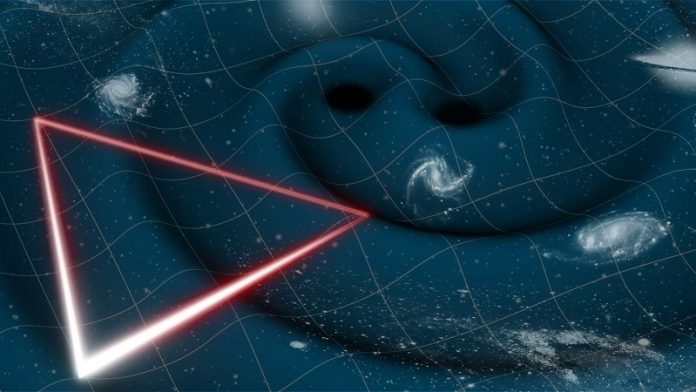
Two Dutch master’s students have discovered that the background noise from white dwarf stars will be louder than expected in the upcoming LISA space mission, a groundbreaking project set to launch in the mid-2030s.
This mission, led by the European Space Agency (ESA), aims to detect gravitational waves from various cosmic objects, including merging black holes and compact binary stars.
However, the new research suggests that the noise from white dwarfs could overshadow the signals from black holes, posing a new challenge.
Gijs Nelemans, an astronomer from Radboud University in the Netherlands, worked with students Seppe Staelens and Sophie Hofman to model this unexpected noise.
Staelens, who is now pursuing a Ph.D. at Cambridge University, started with basic models, while Hofman expanded them.
Their findings showed that the gravitational wave noise from white dwarfs, which are the remains of dead stars like our sun, is stronger than the noise from black holes.
Initially, their supervisor believed that LISA would never be able to detect the combined signals from white dwarfs.
However, their new models suggest otherwise. “We thought black holes would dominate, but it turns out white dwarfs are noisier,” Staelens joked.
This discovery, though surprising, could be beneficial.
While the background noise from white dwarfs might interfere with detecting other cosmic signals, it also presents a unique opportunity to study white dwarfs in distant galaxies.
Normally, telescopes can only observe white dwarfs within our own galaxy, the Milky Way, but LISA could “listen” to them from other galaxies, providing new insights into how stars like our sun evolve.
LISA’s primary mission is to measure gravitational waves from merging black holes, double white dwarfs, and other objects.
It will also detect background noise from billions of black holes that merged long ago. Now, the team knows that LISA will also need to account for the background noise of white dwarfs.
Nelemans and his team are excited about the potential of LISA, not just to study white dwarfs and black holes, but also to detect other exotic cosmic events that could reveal more about the early universe.
Hofman, who contributed to the research, shared her enthusiasm, saying, “It’s really cool that our work is helping shape such an important mission.”
Source: NASA.



